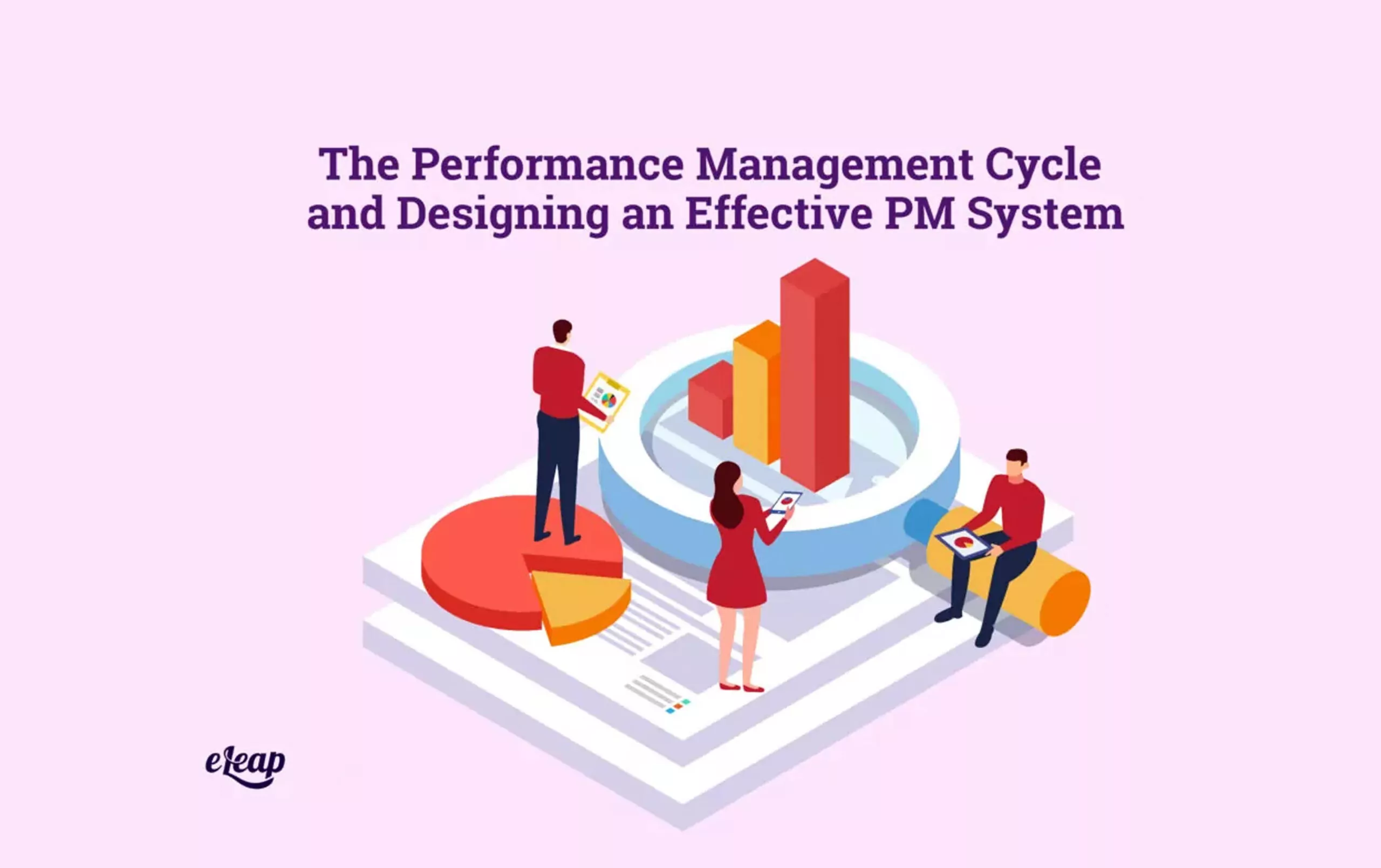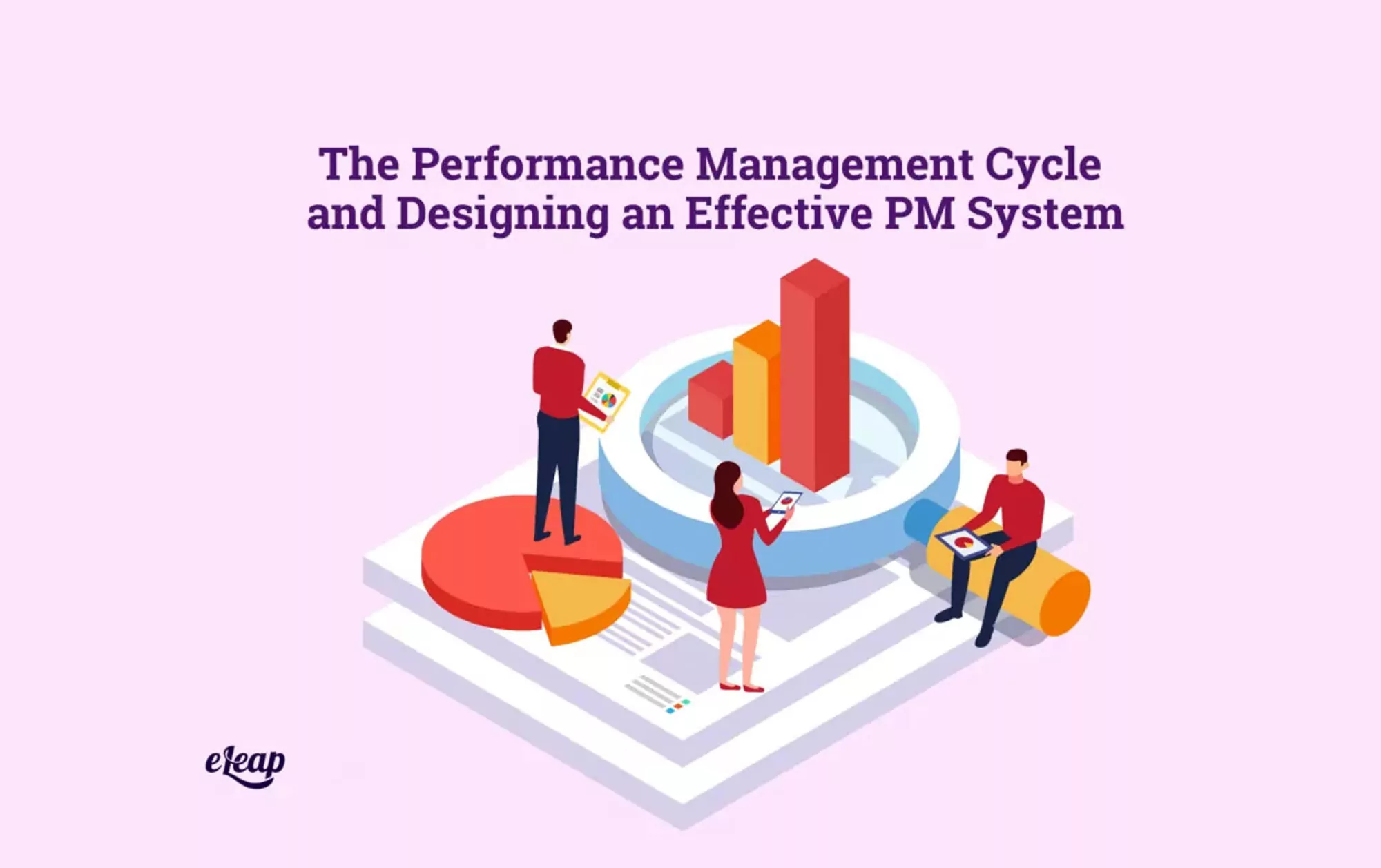The Performance Management Cycle and Designing an Effective PM System

Performance management is not a static field. It changes over time, as all things do. However, the pace of that evolution has accelerated dramatically in recent years. Once cherished beliefs and practices related to performance management have now been discarded, replaced by a new understanding of how to help employees achieve better performance.
Unfortunately, for all the new tools, software, and systems on the market, many organizations still get performance management wrong. This often has more to do with a lack of the correct performance management cycle (or a lack of understanding surrounding the cycle), and the wrong performance management system in place. This post will help you understand the performance management cycle’s various components and what a successful PM system might look like.

The Point of Performance Management
Before going too far into the topic, let’s lay out specifically what performance management is all about. For too many people, it is a punitive process designed to forcibly correct bad employee behavior. While there can be repercussions to continued bad behavior, performance management is not inherently punitive. It’s more akin to mapmaking or, better yet, gardening.
If your tomato plants are not thriving, you don’t blame the plants and punish them. You investigate the growing conditions. Are they receiving the right nutrients from the soil? Is there a parasite or predator responsible? Are they receiving enough sunlight and plenty of water?
A good performance management system helps you take the path of guiding and growing – of development – rather than of “change your ways or else”. That is what today’s workers need and deserve. With a performance management cycle that accounts for the need to guide and nurture, not just punish, it becomes possible to build a talented, loyal, engaged workforce that drives lasting business success.
The Performance Management Cycle
Performance management is cyclical, moving through four defined points and endlessly repeating. These points are:
- Plan
- Act
- Track
- Review
Plan: Without a plan, no PM-related efforts can succeed. However, your plan must be achievable, which means that its objectives must be set correctly. To do that, follow the SMART (specific, measurable, attainable, relevant, time-bound) method. Employees must also have access to an accurate personal development plan. The overall plan should also include actions to be taken in the next few months, as well as ongoing reviews of the job requirements for an employee’s position with regular updates to account for changes.
Act: In the act stage of the performance management cycle, the employee achieves the stated objectives. They carry out their role within the organization and implement the points outlined in their personal development plan.
Track: Tracking is critical. Managers and HR must track an employee’s ability to achieve stated objectives, as well as their progress in implementing their personal development plan. Depending on the results of this tracking, it may be necessary to augment with learning and development-related activities (remember that performance management and L&D are two sides of the same coin and feed into each other). Managers should also provide ongoing feedback to employees throughout this period via check-ins and one-on-ones, as well as more formal performance reviews.
Review: At the end of each cycle, the manager must sit down with the employee (and HR should sit down with leaders) to discuss critical findings. These will be used to help understand what went right and what went wrong and will form the foundation of the next set of goals. Review the achievements made by the employee, balance those against the stated goals, identify what they learned, discuss their career goals, and agree on further actions that will transform into SMART objectives in the subsequent planning phase.
Of these stages, act and track are the most critical. Without action, improvement doesn’t happen. Without tracking, you lack the means to measure progress toward goals in any meaningful way. Unfortunately, these two areas are where many organizations drop the ball. Check-ins and one-on-ones can be used to help improve performance and ensure accuracy and accountability.
Check-Ins and One-one-Ones
The increasing pace of business means that organizations must find more agile ways of pursuing performance management. Enter check-ins and one-on-ones. These tools provide just-in-time course correction for employees and fit neatly anywhere within the wider performance management cycle.
Understanding the differences between these mini-performance reviews is important, though. Check-ins are very informal and may last mere minutes. They’re a way to quickly taking an employee’s pulse and providing immediate help, whether that is in the form of guidance, advice, or a mandate for further learning and development.
One-on-ones are more formal but less so than the conventional performance review. This is your opportunity to sit down with the employee (even if virtually) and discuss things in greater depth. During a one-on-one, you can provide feedback on what the employee is doing right, but also areas of improvement and how they relate to the SMART objectives set during the planning phase of the performance management cycle. However, employees should also be able to provide feedback to the manager, both about their own experience, and the manager’s performance on the job. This information should be used to adjust and evolve objectives and goals.
Bringing It All Together
From one-on-ones to performance reviews to setting SMART objectives within the performance management cycle, the right system is important. With the right platform, it becomes possible to not just visualize each component of the cycle, but to drill down into the various metrics, balance performance against goals in real-time, and gain greater, more accurate insight into the entire process. The result? Lasting changes to performance that drive success for both the employee and the organization. The eLeaP platform offers flexibility, in-depth insight, and the ability to connect the dots and see the bigger performance picture.
What does your own performance management cycle look like? What sorts of challenges have you experienced setting appropriate SMART objectives for employees? Share your challenges and successes with us in the comments below.